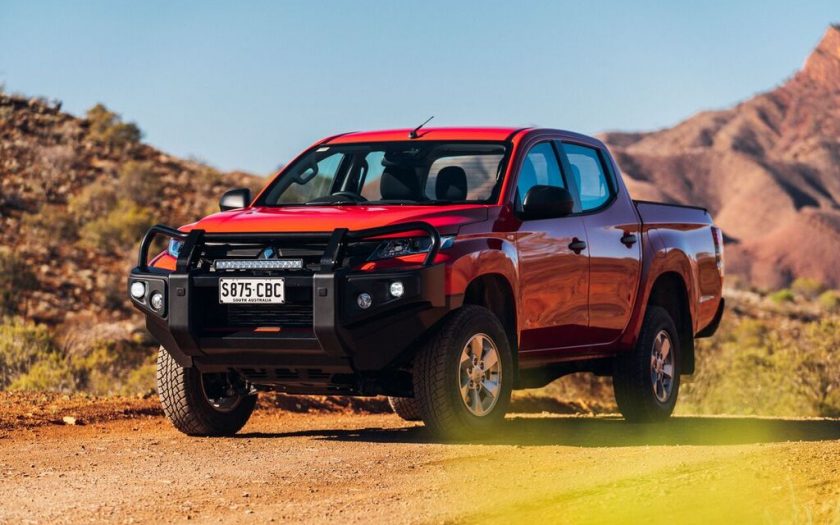Paul Murrell tests the 2020 Mitsubishi Triton with pricing, specs, ride and handling, safety, verdict and everything the over-50 driver needs to know.
Summary: Just months after its facelift, the Triton gets another tweak, and is all the better for it.
2020 MITSUBISHI TRITON
Pricing: $36,290 TO $51,990 (plus ORC) (the Triton saves you a few useful dollars)
Warranty: Seven-years, unlimited km (until December 31, 2019) (we’d like to see it become a permanent offering)
Safety: five-star ANCAP (2015)
Engine: 2.4-litre 4-cylinder turbo diesel
Power: 133kW at 3500rpm
Torque: 430Nm at 2500rpm
Transmission: Six-speed manual. Six-speed automatic.
Drive: 4WD
Body: 5280mm (long); 1815mm (wide); 1780mm (high)
Turning circle: 11.8m
Weight: 1950kg (GLS Premium)
Towing: 3100kg (braked, all models), 750kg (unbraked – GLS Premium)
Tyres: 265/60 R18
Spare: Full size (well done, Mitsubishi!)
Fuel Tank: 75 litres (delivers a useful range, even off-road)
Thirst: 7.9-8.6L/100km (combined)
seniordriver consumption: not yet tested
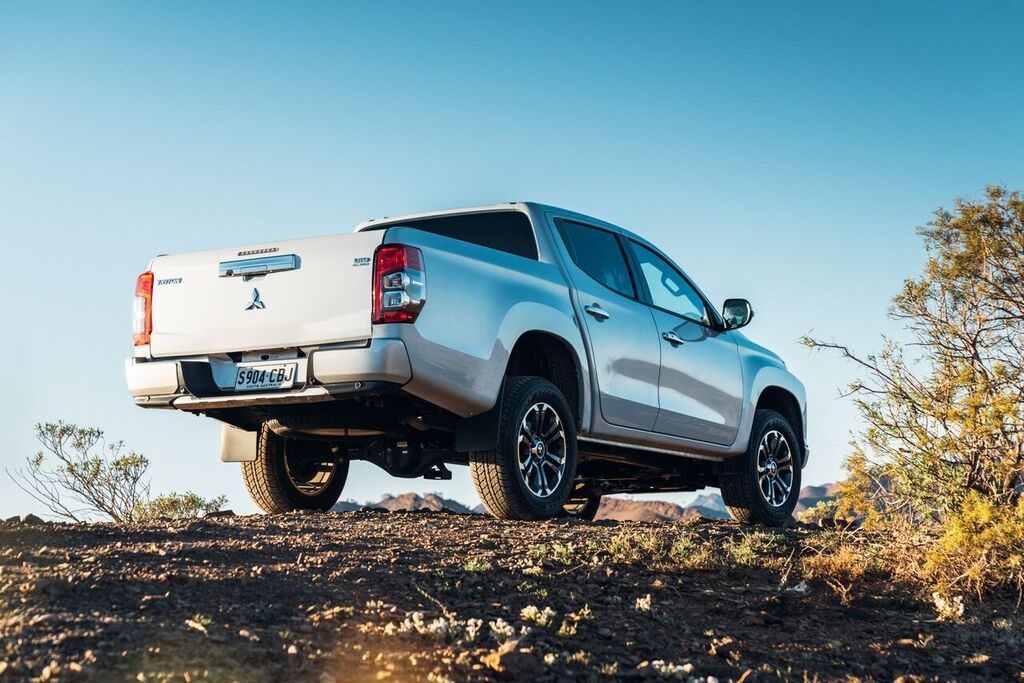
[review]
MOTOR MANUFACTURERS ARE increasingly aware that the majority of buyers are choosing mid-range models and avoiding the high-priced top-end models or the stripped out lower end models.
That helps explain why Mitsubishi has concentrated on putting more power and capability into the mid-range models of the new Triton pick-ups.
The range takes some understanding, with 22 different variants on offer. The base model GLX and GLX ADAS are aimed squarely at industry and mining, while private buyers will head for the GLX+, the GLS Premium and a special edition model, the GLS Toby Price.
What was once the sole preserve of the GLS Premium model is now available on models further down the range. Most important is perhaps the rear diff lock that makes the Triton a formidable off-road vehicle.
The GLX+ model gets Easy-Select 4WD for easy switching between 2WD and 4WD modes and comes complete with 2H, 4H and 4L transfer case settings.
The GLS and GLS Premium models get Super-Select 4WD-II offering 2H (rear wheel drive), 4H (full-time 4WD), 4HLc (lock up) and 4LLc (lock up in low gear).
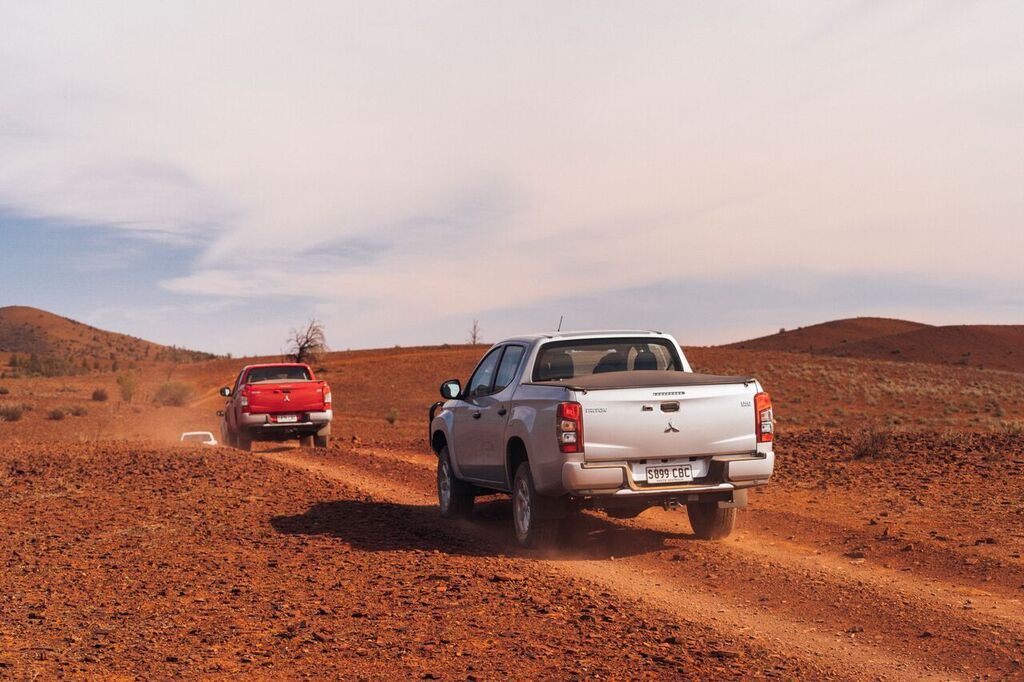
We ventured well off the beaten track and deep into the challenging off-road terrain of South Australia’s Flinders Ranges and came away hugely impressed with the Triton’s go-anywhere ability.
One reason is the Triton’s ground clearance of between 205mm and 220mm (dual cab models) depending on which wheels are fitted (and unlike some, Mitsubishi measures ground clearance from the lowest point under the vehicle – in other words, at the differential). As usual when off-roading, some of the rocks that looked like they’d cause a problem didn’t, and some that looked completely innocuous found something underneath to rub against. However, at no stage did we fail to proceed, and we crawled over some serious obstacles without damage. Driving into and back out of creek beds (naturally, they were all dry) demonstrated the improved approach angle of 31 degrees (perhaps a little unexpectedly, vehicles fitted with the bull bar have a slightly better approach angle than those without). The departure angle of 23 degrees meant an occasional scrape at the rear as we climbed out of the deeper gullies. The ramp break over angle of 25 degrees meant we didn’t get stranded at any time. The folks at Mitsubishi thoughtfully removed the side steps (they do tend to get caught when you least expect it) and we were told it’s a simple job to remove and reinstall them, something off-roading owners will appreciate.
Hill descent control is always useful in the boonies, but we found low gear in low range almost as convenient. HDC in the Triton range is only offered on models fitted with Super Select-II.
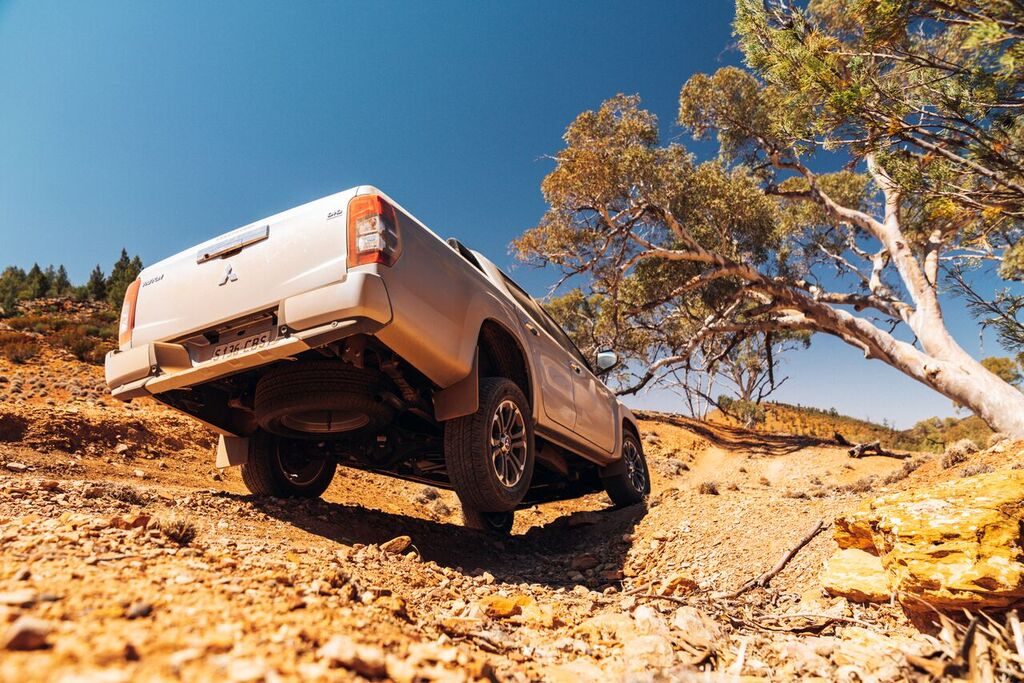
About the only issue we had with the Triton was a reluctance on occasion to switch into or out of low range into high range, or out of 4WD into 2WD, but that may have been down to our lack of familiarity rather than any real issue with the vehicle.
A rear diff lock isn’t something often found in utes. There were plenty of occasions where we had one wheel dangling in the air but with the rear diff lock engaged, we just continued on our way. We were assured that the diff lock makes the Triton highly able to pull itself out of mud or snow.
The Super Select-II system uses an electronic actuator that facilitates switching between drive modes while a rear-bias centre differential splits front/rear drive torque 40:60.
There are four modes with Super Select-II: 2H (rear wheel drive) for use on dry asphalt surfaces, 4H for surfaced and unsurfaced roads, especially in rain or snow, 4HLc that locks the centre differential for snow-covered roads or sand and 4LLc that engages a low gear and locks the centre differential for maximum drive to all four wheels, ideal when negotiating rock or mud.
The Triton GLX and GLX+ miss out on Super Select II, making do with Easy Select 4WD. This system allows the driver to switch between 2WD and 4WD at speeds up to 100km/h. The rear differential lock can be engaged in both 4H and 4L.
We didn’t get the opportunity to drive a manual transmission model, but the ease of operation of the automatic will be the choice of most people.
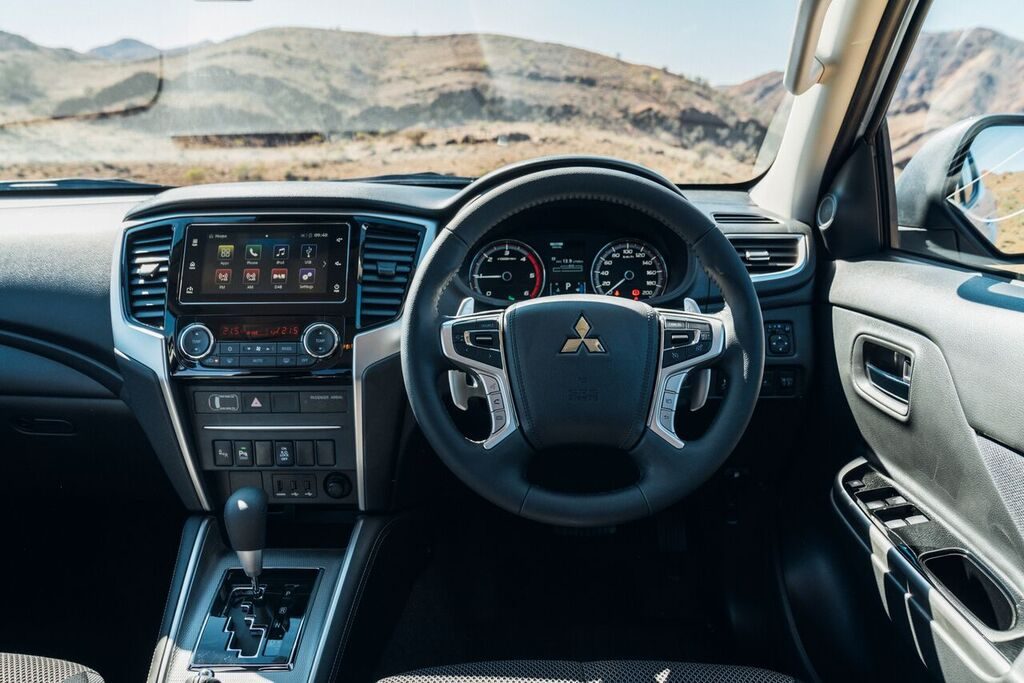
Added comfort and convenience
Utes are no longer driven exclusively by tradies; increasingly, they are the vehicle of choice for weekend warriors, families and other buyers who would have once chosen a sedan or station wagon.
Consequently, buyers are demanding higher levels of comfort and convenience.
The GLX+ model and above now have an air circulator to more quickly improve cabin comfort. It’s an interesting and clever device that directs cool air to the rear seats without the need for ducting through the console. Although it uses the chilled air from the front, directing one of the front vents towards the roof delivers an acceptable degree of cooling for rear seat passengers.
Another change is to keyless one-touch start. Mitsubishi senior manager for product strategy, Owen Thomson, confirmed that according to customer feedback, these features have proven very popular.
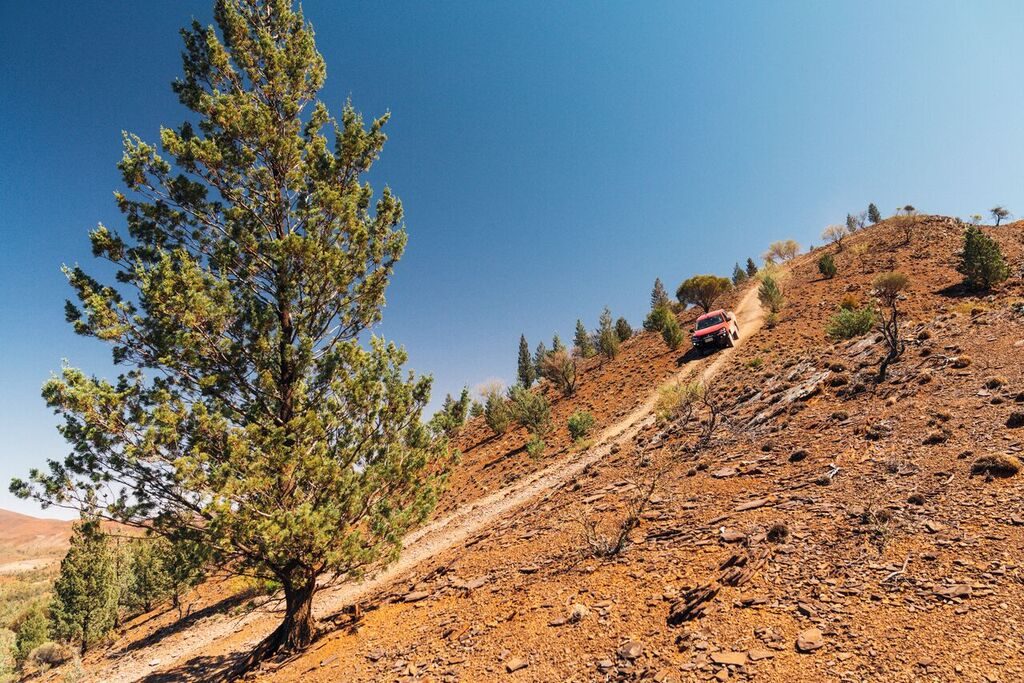
Impressive on road, too
One of the things that really impressed us with the Triton was how quiet and composed it was on road.
The roads around Parachilna and Leigh Creek are a good testing ground to get an idea of how relaxed a vehicle will be over long distances and the Triton came up remarkably well. Once it overcame some nervousness at low speeds, it quickly settled down and at highway speeds and on coarse-chip surfaces, road noise was commendably low and even unladen, the ride was uncompromised.
We were able to maintain quite high average times, and the Triton was quite capable and comfortable at speeds well beyond the legal limit.
Naturally, there was a bit of diesel clatter at idle, but nothing objectionable. The 2.4-litre diesel mates well to the six-speed auto and delivers acceptable, if not neck-snapping, performance.
Worth noting for around-town manoeuvring, the Triton has a tight turning circle of 11.8m which beats most competitors by around a meter.
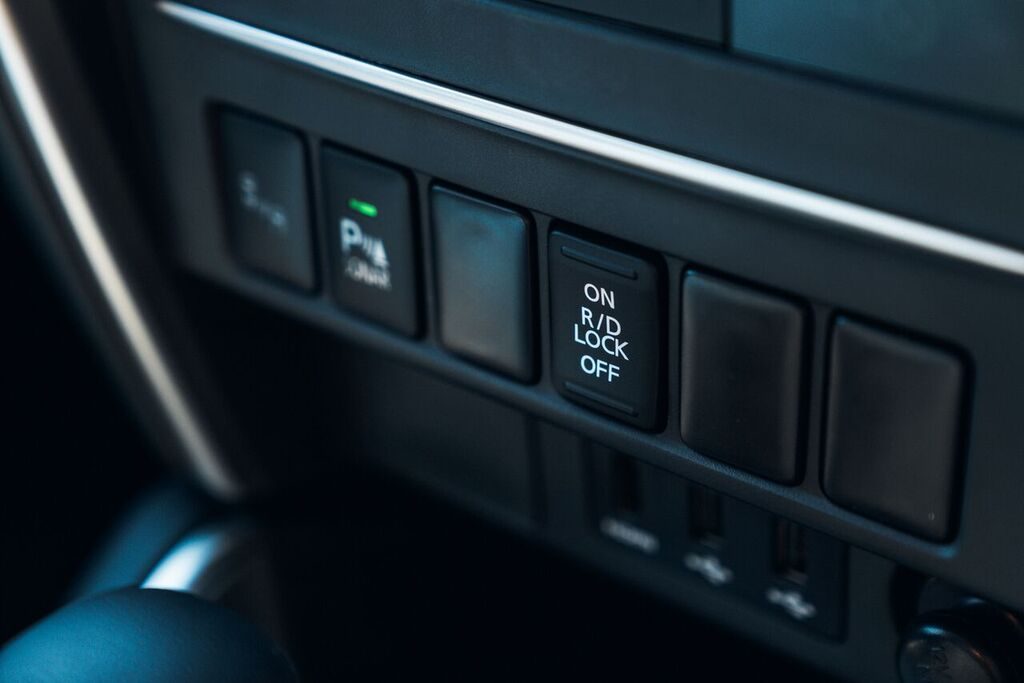
A gentle restyle
Given that the Triton was refreshed only a few months ago, the changes this time around are fairly minor. In fact, this upgrade is more about real improvements rather than cosmetics, although the GLS Premium now gets a black sports bar to replace the previous shiny alloy version (the GLS deletes the sports bar to facilitate fitting a canopy).
Inside, things are virtually unchanged. The layout and graphics are workmanlike rather than class-leading but there’s nothing to object to. Unlike some in the class, the steering is adjustable for both reach and rake.
The absence of adaptive cruise control is a notable omission, but there’s not much else to complain about.
Prices have risen modestly (between $500 and $1000, depending on model) but this is pretty well justified by the increased specification. In addition, a Mitsubishi executive confided to us that list prices are fairly flexible (and not just for Mitsubishi) so haggle hard and keep a close eye on any special deals being offered.
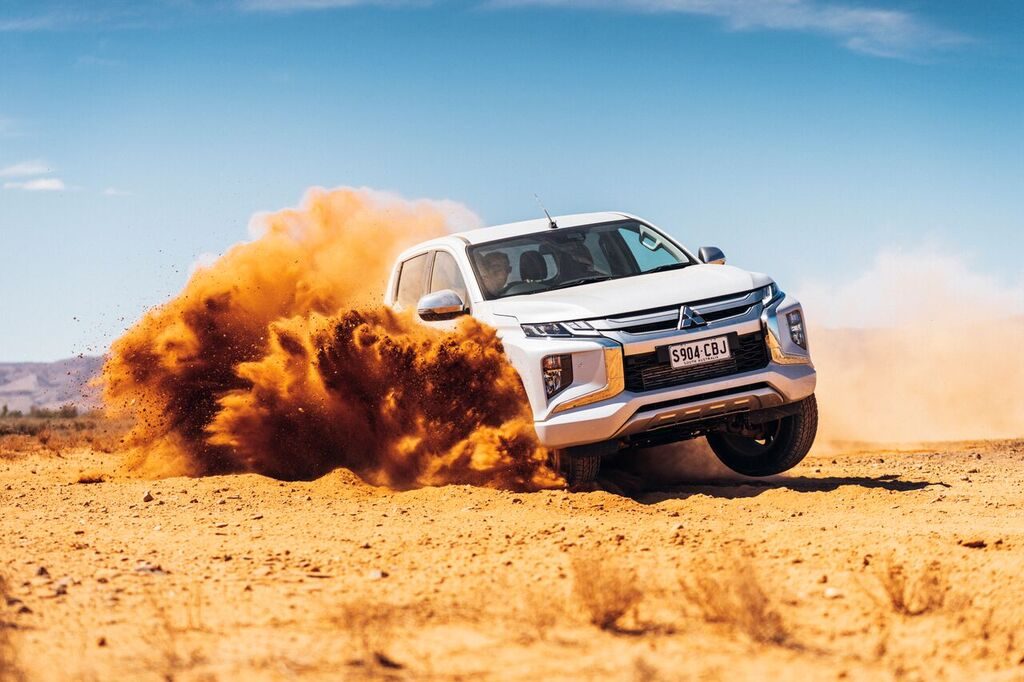
Towing capacity for the real world
There’s a lot of chest-beating when it comes to claimed towing capacities, but Mitsubishi plays it straight down the line. Overseas, the Triton is often rated at 3500kg, which has rapidly become the default for this class of vehicle, but Mitsubishi claims a more realistic 3100kg, plus a payload capacity of between 850kg (the GLS Premium) and 1280kg (the 4×2 single cab petrol model) depending on variant and transmission.
This is all backed up with an impressive seven-year unlimited kilometre factory warranty (at least, if you buy before December 31), plus a three-year 45,000km capped price service program costing $299 for each 12-month/15,000km service. Most capped price service programs last for the period of the warranty, but Mitsubishi’s stops after three years.
MY20 Triton Pricing
Triton Single Cab
4X2 GLX Cab Chassis 2.4L Man Petrol $22,490
4X2 GLX Cab Chassis 2.4L Man Diesel $25,990
4X2 GLX Cab Chassis 2.4L Auto Diesel $28,490
4X4 GLX Cab Chassis 2.4L Man Diesel $32,990
4X4 GLX Cab Chassis 2.4L Auto Diesel $35,490
Triton Club Cab
4×4 GLX Cab Chassis 2.4L Man Diesel $35,490
4×4 GLX ADAS Cab Chassis 2.4L Auto Diesel $38,790
4×4 GLX+ Cab Chassis 2.4L Auto Diesel $41,490 (+$1000)
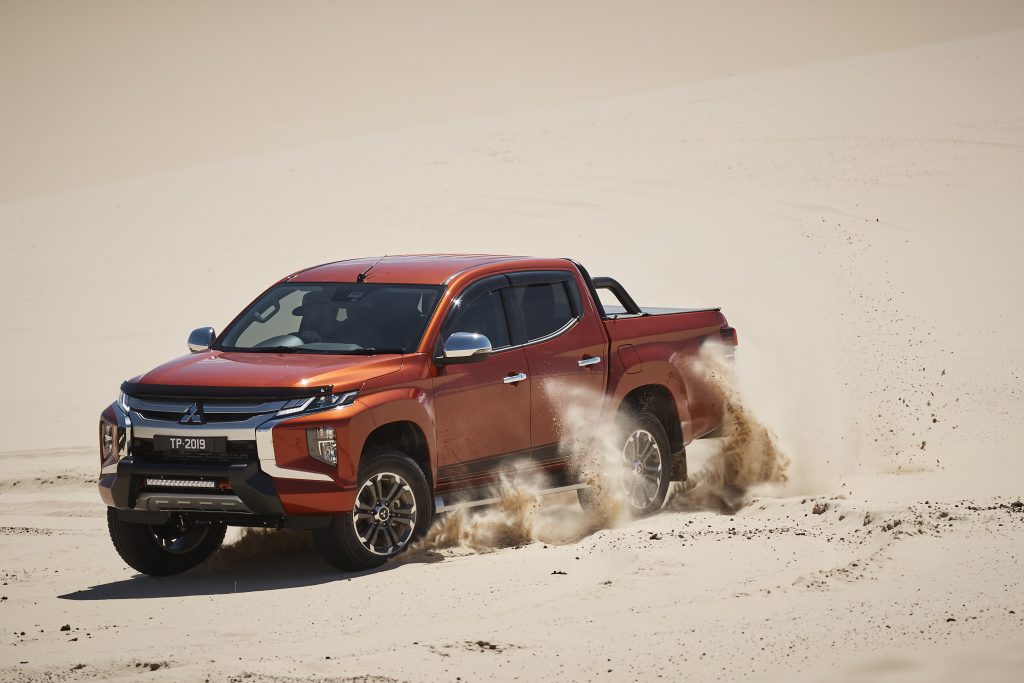
Triton Dual Cab
4×2 GLX ADAS Pick Up 2.4L Auto Diesel $36,290
4×4 GLX Cab Chassis 2.4L Man Diesel $36,240
4×4 GLX ADAS Cab Chassis 2.4L Auto Diesel $39,540
4×4 GLX 2.4L Pick Up Man Diesel $37,490
4×4 GLX 2.4L Pick Up Auto Diesel $39,990
4×4 GLX ADAS 2.4L Pick Up Man Diesel $38,290
4×4 GLX ADAS 2.4L Pick Up Auto Diesel $40,790
4×4 GLX+ 2.4L Pick Up Man Diesel $40,990 (+$1000)
4×4 GLX+ 2.4L Pick Up Auto Diesel $43,490 (+$1000)
4×4 GLS 2.4L Pick Up Man Diesel $45,140 (+$500)
4×4 Toby Price Edition Pick Up Man Diesel $48,140
4×4 GLS 2.4L Pick Up Auto Diesel $46,990 (+$650)
4×4 Toby Price Edition Pick Up Auto Diesel $50,640
4×4 GLS Premium 2.4L Pick Up Auto Diesel $51,990 (+$500)
